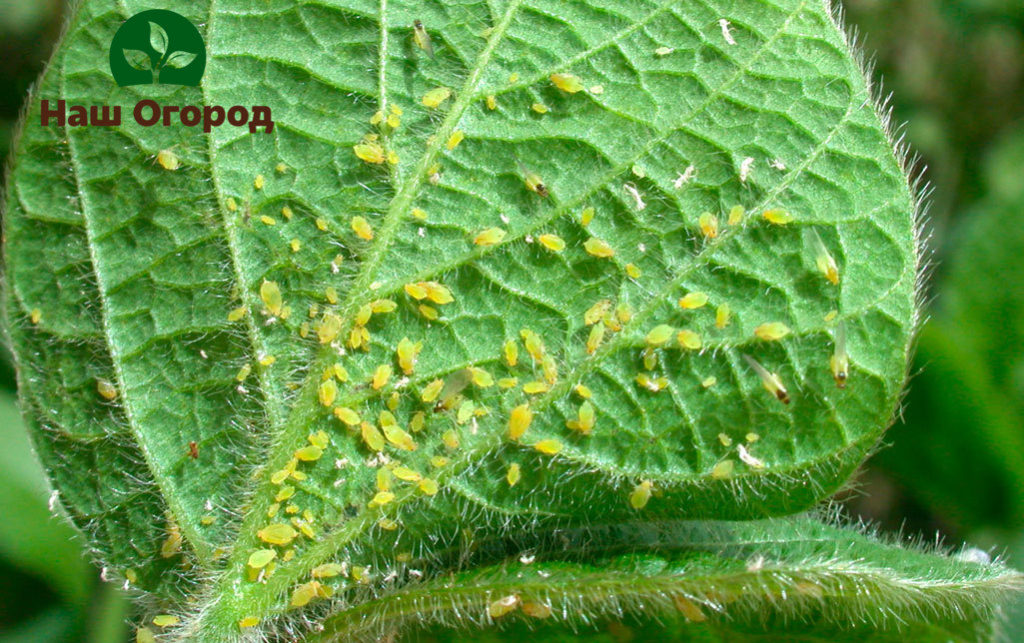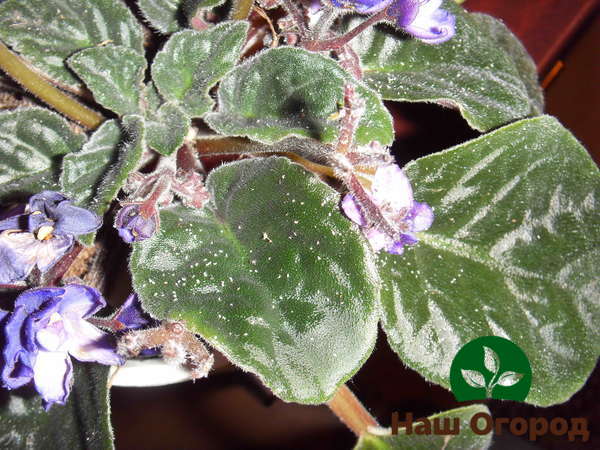Who is aphid and how to deal with it
Content:
Aphids: who is it?
The issues that concern breeders of indoor plants are not limited to the conditions of watering and care: indoor plants are also attacked by insects and pests, so it is extremely important to consider the possibilities to fight them. When faced with aphids, gardeners are trying to look for many ways to get rid of it. But we need to understand what aphid is, where it comes from, and what dangers it entails for indoor plants.

Aphids, which most often infect indoor plants (in general, and garden plants grown in the open field) belong to the order of Hemiptera sucking insects. Despite the fact that it practically does not move, it causes irreparable harm to plants, the consequences of which are very difficult to deal with. Mostly, the aphid is located on the stems in the lower side of the leaf, it very actively sucks out all the juice and life-giving moisture from it, deprives the plant of all its strength for subsequent growth. In addition, aphids leave a sticky liquid at the puncture site, which becomes a medium for the spread of bacteria and, subsequently, fungus.
Despite their size, aphids are very tenacious and, most importantly, very prolific. One female can produce more than a thousand similar ones, which also spread through the plants, affecting them. In one season, a change of thirty generations of an insect can occur, and one can only guess how much damage to the crop they can cause during this time. Laying eggs begins in the autumn, and the eternal aphid comes out of hibernation, young individuals appear, which immediately begin to destroy the plant for their own survival.
Spreading aphids to indoor plants
Of course, aphids can affect not only plants that are in natural conditions, but also indoor plants, taking into account the careful care of them by gardeners. Aphids can enter the house in several ways, which provokes its spread to indoor plants:
1. Firstly, aphids get home with the ground. For example, a gardener decided to purchase land not in specialized stores, but to collect it on the street or from his own plot, he must be prepared for the fact that this land is infected with parasites, in particular, aphids. Therefore, before planting in this soil, it should be disinfected - heated in the oven, rinsed with hot boiled water;
2. Secondly, aphids can spread from open windows - they have wings, so they can fly from a street plant to an indoor plant. In order to reduce the risk of aphids in the room in this way, it is necessary to install mosquito nets on the windows, especially in the summer;
3. Aphids can also appear in apartments along with new plants that the gardener buys in stores or collects on the street. Before you bring the plant home, you should very carefully examine it for the presence of aphids on the leaves and branches.
Danger of aphids
For indoor plants, aphids are really very dangerous. It sucks out all the life-giving and nutritious juices from them, which is why the plant quickly dries up and simply dies. Leaves are deformed, lose their healthy appearance, young leaves may turn yellow altogether, even before they bloom.

Also, aphid infestation leads to the rapid spread of fungal diseases, which act as concomitants after the plant has already been infested with aphids. If the aphid colony is too large, then the amount of sap in the plant is reduced to a minimum. At the same time, the liquid that the aphid itself secretes is in excess, so the leaves may look sticky, as if they were poured with syrup. And this is a natural environment for the reproduction of bacteria and other diseases, which also negatively affect the state of the plant, its appearance.

